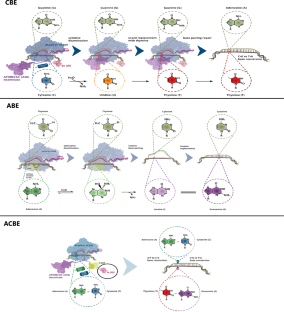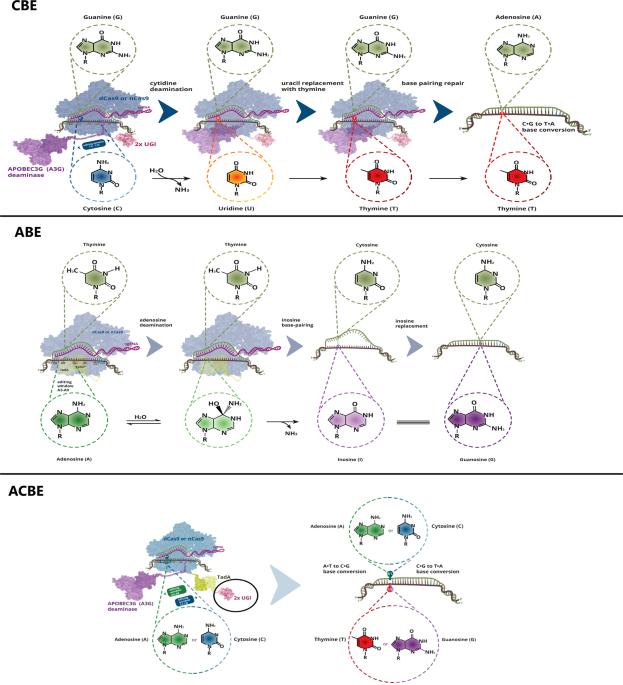CRISPR/Cas9 介导的碱基编辑器及其在线粒体基因组工程中的应用前景
IF 4.6
3区 医学
Q1 BIOCHEMISTRY & MOLECULAR BIOLOGY
引用次数: 0
摘要
碱基编辑器是一种无双链断裂(DSB)的基因编辑技术,它为精确操作线粒体 DNA(mtDNA)提供了新的可能性。这包括胞嘧啶和腺苷碱基编辑器,以及最近的鸟苷碱基编辑器。由于脱靶率和滞后率较低,人们对这一研究领域的发展和演变越来越感兴趣。在此,我们将详细介绍 DNA 碱基编辑器的最新进展。虽然碱基编辑已广泛应用于核基因组工程,但人们对将这一技术应用于线粒体 DNA 的兴趣与日俱增,但也面临着一些挑战。虽然 Cas9 蛋白已被证明可以进入线粒体,但使用较小的 Cas 蛋白(如 Cas12a)具有更高的导入效率。sgRNA 的结构和 Cas 蛋白与 sgRNA 的比例都是 sgRNA 高效进入线粒体的重要因素。总之,尽管仍有一些挑战有待解决,但这一领域的持续研究有望为线粒体疾病带来新的治疗方法和疗法。本文章由计算机程序翻译,如有差异,请以英文原文为准。


CRISPR/Cas9-mediated base editors and their prospects for mitochondrial genome engineering
Base editors are a type of double-stranded break (DSB)-free gene editing technology that has opened up new possibilities for precise manipulation of mitochondrial DNA (mtDNA). This includes cytosine and adenosine base editors and more recently guanosine base editors. Because of having low off-target and indel rates, there is a growing interest in developing and evolving this research field. Here, we provide a detailed update on DNA base editors. While base editing has widely been used for nuclear genome engineering, the growing interest in applying this technology to mitochondrial DNA has been faced with several challenges. While Cas9 protein has been shown to enter mitochondria, use of smaller Cas proteins, such as Cas12a, has higher import efficiency. However, sgRNA transfer into mitochondria is the most challenging step. sgRNA structure and ratio of Cas protein to sgRNA are both important factors for efficient sgRNA entry into mitochondria. In conclusion, while there are still several challenges to be addressed, ongoing research in this field holds the potential for new treatments and therapies for mitochondrial disorders.
求助全文
通过发布文献求助,成功后即可免费获取论文全文。
去求助
来源期刊

Gene Therapy
医学-生化与分子生物学
CiteScore
9.70
自引率
2.00%
发文量
67
审稿时长
4-8 weeks
期刊介绍:
Gene Therapy covers both the research and clinical applications of novel therapeutic techniques based on a genetic component. Over the last few decades, significant advances in technologies ranging from identifying novel genetic targets that cause disease through to clinical studies, which show therapeutic benefit, have elevated this multidisciplinary field to the forefront of modern medicine.
 求助内容:
求助内容: 应助结果提醒方式:
应助结果提醒方式:


